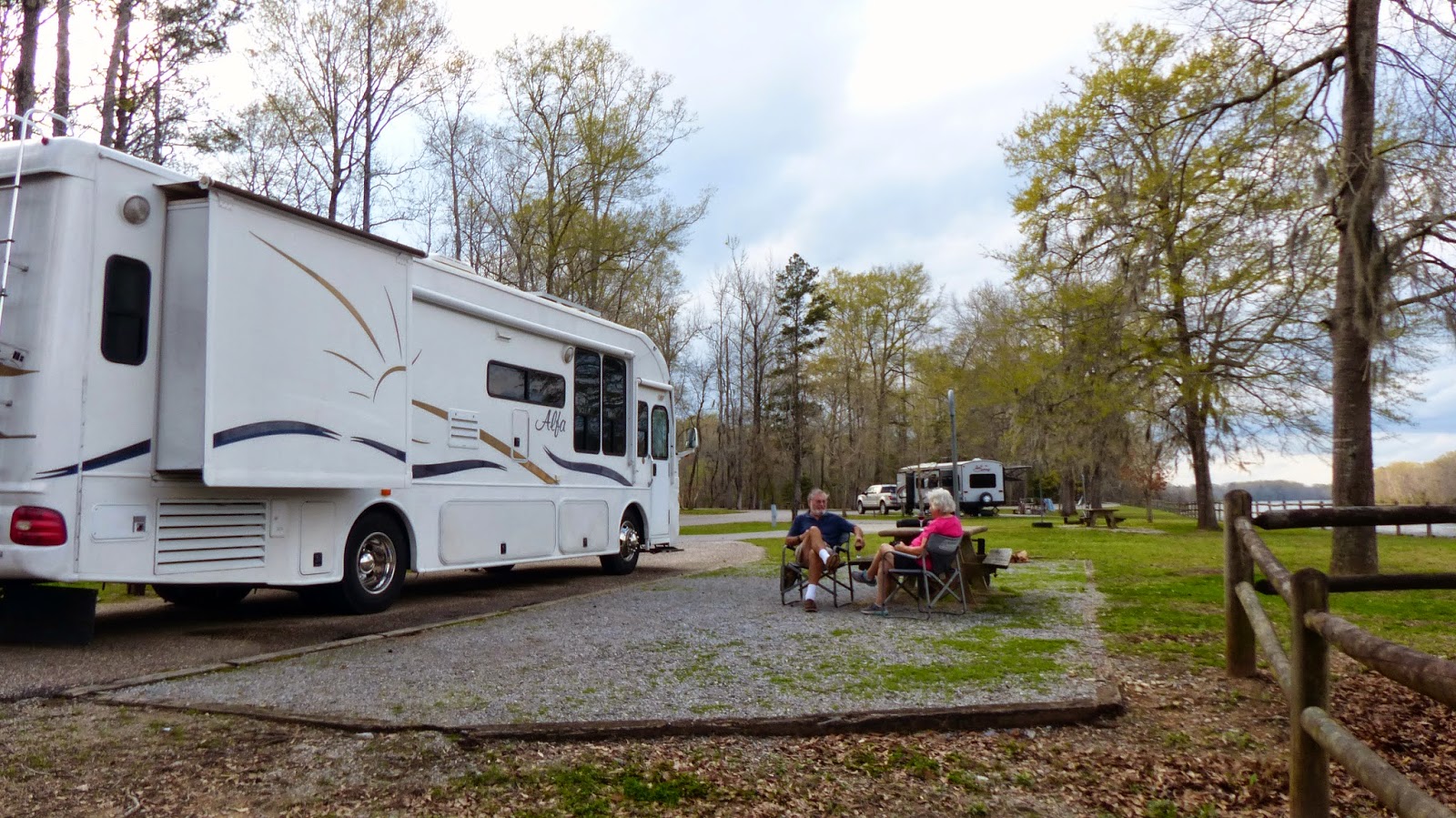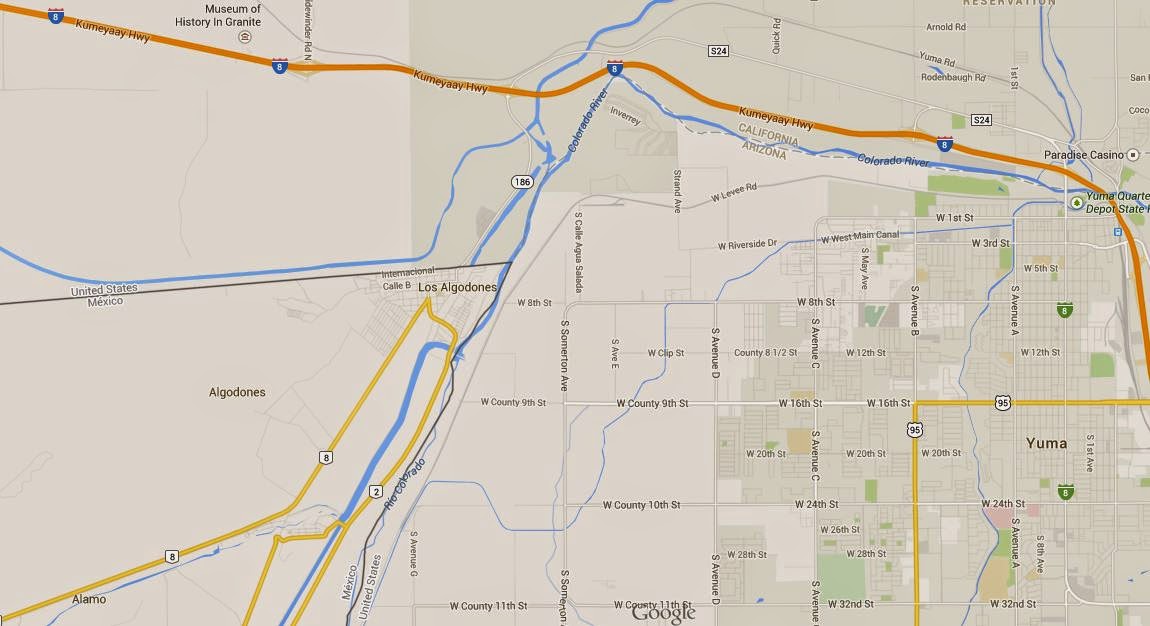 |
| Jo swings under the live oaks along the Pedernales River. Her swing faces LBJ's Texas White House. |
 |
| Farmer Sam Nail and his wife carved out a little piece of paradise in the desert. Walls of his house were made from adobe. They stayed alive with the help of a windmill, pumping water. |
There’s a world of difference between the Texas hill
country of Lyndon B. Johnson’s ranch in Stonewall and the naked, almost brutal
landscape of the Big Bend National Park,
south along the Rio Grande River.
It’s easy to understand LBJ’s love for the hill
country – those lush and ancient live oaks, the mesquite trees (the locals call
all this wood barbecue wood!). And there’s water, too. The Pedernales River,
not mighty but seemingly ever-flowing, wanders past the ranch, providing
sustenance to the farmlands.
Down the road 250 miles, approaching Big Bend, we
have left all civilization behind. There’s no wi-fi, no television reception,
no cellphone here. You are under an all-encompassing blue sky and an
unforgiving sun. We parked our rig
alongside the road in a picnic area. We’re living off the sun. Last night, we
stayed in a free county park in Sonora, TX, and slept the night away in utter
peace. Now we wander the scrubby landscape, marveling at the similarity between
this hardscrabble lands and the deserts of Namibia in Africa. The mesas, sometimes flat-topped, sometimes
conical as though they are volcanoes, make up the distant horizon. Windmills,
hundreds of them, line the horizon to generate electricity as we drive across
the ribbon of concrete that is Interstate 10.
Two days ago, we walked through the Texas White
House. It has been restored to the way it looked back in the 1960s – which
means a remarkable amount of yellow Formica, almond-colored refrigerators and
Herculon seating. LBJ’s bedroom is a masterpiece of 60s modern tech. He had his
three TV sets across the room. He had Muzak buttons he could push for different
mood music. He had telephones everywhere (under the dining room table, in the
kitchen, in the bedroom, the bathroom, library. Ladybird’s bedroom, meanwhile,
is devoid of all this hi-tech stuff. She has a book by Larry McMurtry lying on
her bed. Her closet is filled with the clothing of the 60s.
In the office where LBJ worked, there’s a Naugahyde
recliner chair with the insignia of the president of the U.S. embedded on it.
And a cushion is embroidered with the words, “What I love about being here is
it is my place and I’ll do what I damn well please.”
Now, as we sit on the side of a hill with wild
flowers poking their way through the stony ground, we are in a different world.
It is a land that is light on water. When we enter Big Bend National Park we
are warned that we should bring the
water we will consume into the park. Otherwise we’ll be rationed to five
gallons per day.
We cannot park our rig inside the park because the
sites don’t accommodate anything larger than 24 feet. So we’ve had to book into
a commercial campground outside the western edge of the park.
After settling in at a dusty (and too-expensive RV
park), we get in the card and head back into the park. We’d stopped at the
Ranger station and a young woman gave us good advice about the places we need
to seek out. As a result, we are heading for the Rio Grande River at Santa Elena
Canyon. The cliffs are staggering in their nakedness and inaccessibility.
We stop by a sign that tells us Sam Nail and his
wife, Nena, operated a farm here. We walk along the stony path to the remains
of the adobe house. There are pecan and
fig trees. Sam had some livestock and a precious windmill still works a hundred
years later. The blades were being turned by the light breeze. The shaft rose
and fell about a foot. And up came the water. It poured, a pint at a time, from
the earth. This precious water made the difference between life and death in
this arid land.
We came to the canyon after a 30-mile drive through
the desert, most of it downhill. We walked the trail to the river, finding
gangling boys from Tulane University standing in the their bare feet in the mud
of the river. I dodge the mud and then we decided to walk up river a bit. We
found a ford that let us make it up a bank, still on the American side. We
clambered along an eroding bank and then came upon concrete steps that allowed
us to climb high above the river. A handful of people were there, but there was
very little sign of wildlife. Millions of cacti, of course – and much of it in
full bloom.
I photographed to my heart’s content while Jo rested
on the halfway point of the steps. We met up with a Canadian couple from Sault
Ste. Marie, Ontario. He was excited about spotting 15 turtles swimming in the
Rio Grande, close to the Mexican shore. The river, incidentally, seems like a
passive thing. It meanders along, muddy-colored and gentle. It takes great
imagination to come to grips with the fact that it is responsible for carving
its way through the several thousand-foot-high cliffs that make up this gorge.
But it did. Of course its sweet time to do this over multiple millions of
years.
We made our way back to the main road and drove
uphill past a remarkable rock formation called The Mules Ears. Again, this was
the result of erosion of the surrounding landscape, exposing these pillars of
rock that look like they sound.







